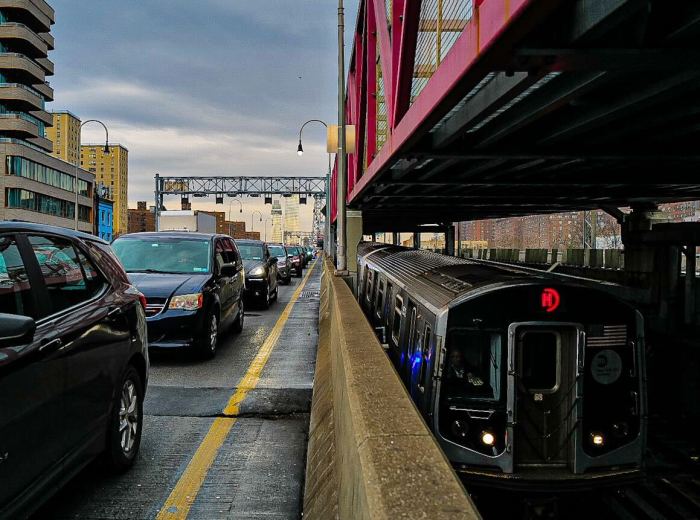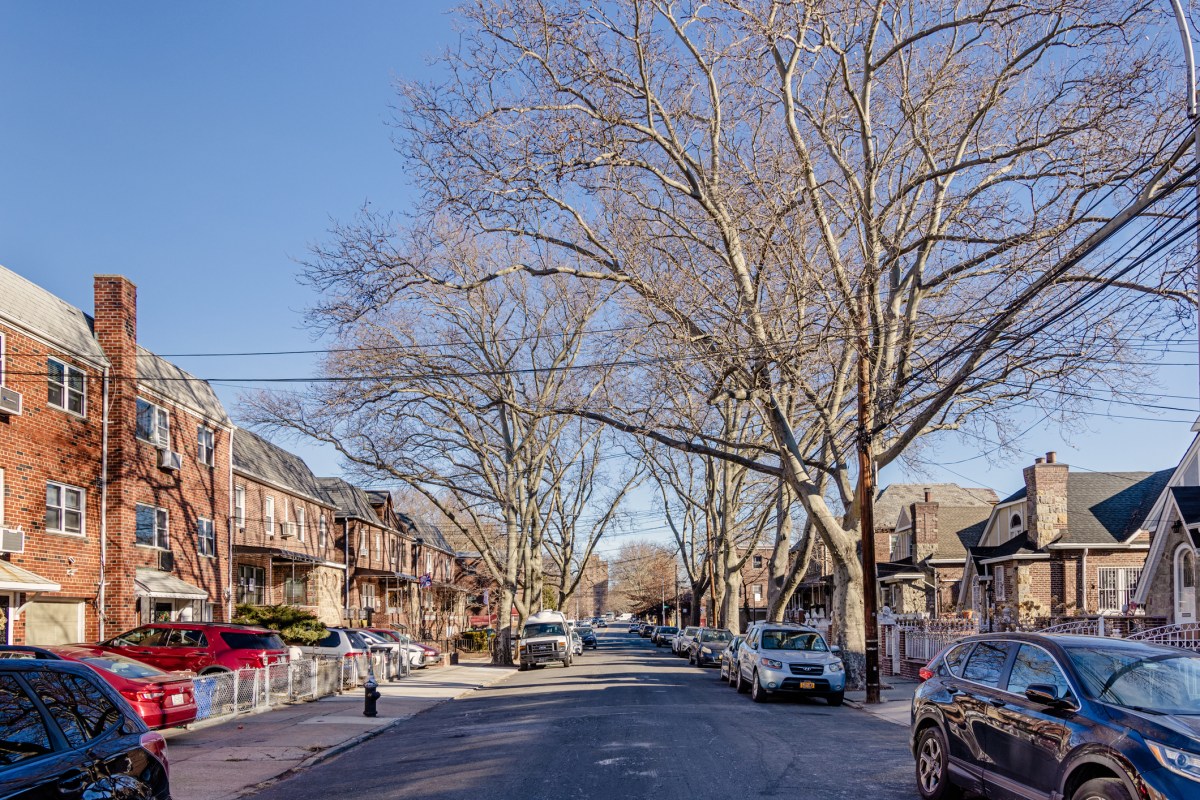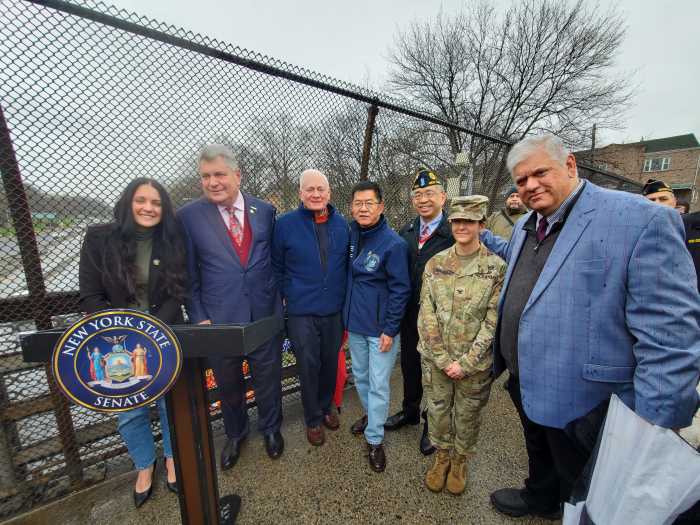First opened in 1939 in the northernmost section of East Elmhurst, Queens, LaGuardia is ranked as the 21st busiest airport in the country, per the Port Authority of New York and New Jersey.
In 2018, over 30 million travelers walked through its terminals. LaGuardia provides nonstop service to 73 destinations via 11 airlines, which use 79 gates spread across four terminals. About 4 million passengers use the airport to connect to other flights.
Nearly 6,000 tons of cargo and over 4,000 tons of mail passed through the airport last year.
Yet the airport has garnered a reputation for being shabby and ill-equipped to handle the number of passengers that rely on it.
In June 2016, Gov. Andrew M. Cuomo unveiled plans to completely renovate the troubled airport, including a brand-new Central Terminal Building.
How LaGuardia came to be known as a ‘Third World country’
Today’s LaGuardia has been built up over decades to meet increased demand. Marine Air Terminal, known as Terminal A, was built in 1939.
Terminal B, or the Central Terminal Building, opened 25 years later, in 1964. The terminal serves as the airport’s nexus and handles the majority of its passengers.
Terminal D opened in 1983, with Terminal C following in 1992.
Once billed as the “air gateway to America,” Terminal B fell into such disrepair that former Vice President Joe Biden once referred to it as a “Third World country.” The significantly outdated airport has been surpassed in usage by both Newark and Kennedy airports.
LaGuardia’s isolated terminals, a product of “sporadic and piecemeal development,” hinders plane movement, which leads to gate delays and significantly dampens the commuter experience, officials have said.
Plans for rebuilding
Over the next several years, LaGuardia Airport will be completely rebuilt under a plan from Cuomo and his Airport Advisory Panel.
The governor pushed to build a Central Terminal Building with a “world-class” main entrance, more mass transit connections and a better utilization of LaGuardia’s relatively small real estate to the tune of an estimated $8 billion.
The project will link all four terminals through one new facility that will be built 600 feet closer to the adjacent Grand Central Parkway. Pushing the airport toward the highway will make way for 2 miles of aircraft taxiways to improve plane movement, which would then reduce delays, according to the governor.
To support the shift, a new roadway network is being built along with a 3,000-car parking garage, known as the West Parking Garage.
In all, the new airport is expected to span 2.7 million square feet with six new concourses and 79 gates.
Substantial progress has been made in the construction of the new Central Terminal Building (Terminal B). Sixteen of the terminal’s 18 gates are now open, as well as new dining and retail options.
The 243,000-square-foot terminal — serving American, United and Southwest airlines — has floor-to-ceiling windows and features shops like MAC cosmetics, Shake Shack and FAO Schwarz.
Seven more gates are expected to open in 2020 along with two glassy pedestrian bridges with scenic views and two island concourses.
A proposed AirTrain draws mixed reactions
An AirTrain connecting the airport with the Port Washington Long Island Rail Road branch and the Willets Point 7 train station is expected to increase mass transit options. Cuomo has, on several occasions, emphasized the importance of linking LaGuardia to the subway through an AirTrain system.
“How can you not have a rail train to the city from a New York airport? I mean, it’s just incomprehensible, right?” Cuomo said during a bill signing granting New York public land for the project in June 2018.
The Port Authority has budgeted $2.05 billion – an increase from an earlier $1.5 billion estimate – to build the AirTrain across about 2 miles of public land, completely avoiding private property and the likely backlash from residents.
Environmental advocates, however, have voiced concerns about the possible effects of building the AirTrain over Flushing Bay or its promenade. City Comptroller Scott Stringer, meanwhile, has suggested there is a lack of infrastructure funding to support an influx of riders related to the AirTrain project.
Port Authority executive director Rick Cotton, however, has defended the project.
“With no rail link, millions of passengers too frequently face the inevitable congestion on the roadways and unpredictable delays in reaching the airport,” Cotton said. “They never know what the travel time to LaGuardia will be, whether it will be the normal experience or whether it will be two, three or more times what they anticipate.”
The Federal Aviation Administration has begun its environmental review of the AirTrain plan. Public meetings on the project were held in June at the New York LaGuardia Airport Marriott Hotel. Area residents were invited to attend and offer input, and FAA and Port Authority representatives were on hand to answer questions.
Timeline and funding
The new LaGuardia’s $8 billion price tag is being funded by both private and public dollars, with 75 percent coming from private sources, according to Cuomo.
The first half of the project will cost $4 billion through what is considered the largest public-private partnership for infrastructure in the United States, the governor said.
In August 2017, Magic Johnson Enterprises and Loop Capital, which together make up JLC Infrastructure, announced a $10 million equity investment with LaGuardia Gateway Partners, the consortium of developers leading the rebuild.
Ground broke on the project in June 2016. The first gates connected to the new Central Terminal Building opened on Dec. 1, 2018, and the facility is projected to be completed by 2022.
The second half of the project will involve redeveloping and combining the Delta-operated terminals C and D. That work, which is expected to be done by 2021, is estimated to cost $4 billion and will be financed primarily through Delta, with the Port Authority contributing $600 million.
The renovation will include four concourses with 37 gates, and is considered the largest airport investment in the company’s history, Delta CEO Edward Bastian said.
Port Authority money will go toward building new supporting infrastructure around Delta’s terminals, like ramps, an electrical substation and connecting roadways.
Traffic
While construction continues, a new traffic pattern for entering the airport from Grand Central Parkway’s westbound exits 6 and 7 was established on Aug. 10. For access to Terminal B, travelers should use the new westbound exit 7. For Terminal C and D, drivers should use the westbound exit 6.
Preparations for the change created headaches for motorists trying to get to the airport on Aug. 8. The grid lock was so bad that travelers were seen getting out of vehicles with their luggage and walking along the Grand Central Parkway.
The Port Authority said the issues were compounded by increased passenger volume after more than 300 flights had been canceled the day before due to severe storms.
“Today is the [second] busiest day in LGA history and will likely be the busiest ever by day’s end,” the airport tweeted on Aug. 8. “That record passenger volume comes in the midst of peak construction as we build a whole new LaGuardia Airport, and now rush hour traffic.”
Airport officials said Port Authority police increased its presence by more than 50% in an effort to better manage traffic flow, which subsided after a few hours.
“We understand how frustrating this traffic can be, and please know that we are doing all that we can to ensure passengers can get to and from the airport as expeditiously as possible. Thank you for your patience,” the airport also tweeted.
Six airlines at LaGuardia shifted to new terminal locations in December 2017, as part of the ongoing construction project, the Port Authority said. The relocations include:
- JetBlue and Alaska Airlines moved from Terminal B to the Marine Air Terminal, also called Terminal A.
- American Airlines moved from Terminal C to Terminal B.
- The Delta Shuttle consolidated into Terminal C.
- Frontier Airlines relocated its departures to Terminal C and its arrivals to Terminal D.
- Spirit Airlines moved its departures to Terminal C and its arrivals to Terminal D.
A new flyover roadway was opened last summer that officials say is part of a critical plan to untangle a maze of traffic routes near the airport. The flyover at the eastbound Exit 7 on the Grand Central Parkway is part of a plan to demolish 15 bridges and build 26 new ones and to reduce the number of traffic signals from 19 to three.
The new West Parking Garage opened in February 2018. The seven-level garage offers 3,100 public parking spaces and connects with the Central Terminal Building. In conjunction with the garage’s opening, LaGuardia Airport launched a website where travelers can pre-book discounted parking that guarantees a spot ahead of time.
With Lauren Cook and Newsday


































